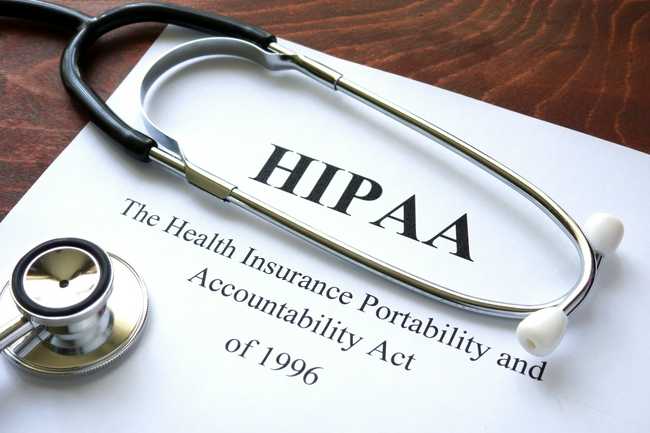Medical professionals are known for scrubbing their hands before procedures. But just how clean are healthcare facilities and the individuals who work in them? Well, the aseptic technique is a method that’s commonly used to protect patients.

According to the Center for Disease Control (CDC), healthcare workers are required to learn about the aseptic technique during training. It’s also expected to be enforced in institutional policies. By implementing this technique, patients have more protection against harmful germs.
However, there’s more than one method that medical providers use to ensure the safety of patients—the clean technique is used also. To learn more about the difference between the two, take a look at the information below.
What Is the Aseptic Technique?
It’s impossible to get away from bacteria— they’re all around us. However, not all of them are created equal, and there are good and bad bacteria. The microorganisms, bacteria, and viruses that cause diseases are known as pathogens.
In order to shield patients against harmful bacteria and other pathogens, healthcare professionals use the aseptic technique during medical procedures.
Without the aseptic technique, the spread of pathogens can lead to infections and other illnesses. Below are some of the common reasons why medical professionals use the aseptic technique:
- Handling surgical tools
- Performing dialysis
- Childbirth via vaginal delivery
- Handling dialysis catheters
- Performing surgical procedures
- Putting in a urinary catheter
- Putting in an IV or arterial lines
- Inserting draining devices
All of the procedures listed above require close contact. Therefore the aseptic technique is vital to protecting the health of patients.
The Common Aspects of the Aseptic Technique
There are four primary aspects of the aseptic technique. Each aspect is an important component of ensuring that infection doesn’t spread during a medical procedure.
The aspects include the following:
Environmental Control
Keeping the environment sterile is essential to keeping harmful pathogens at bay. During an operation, health professionals keep the environment safe by closing the doors and only allowing authorized personnel into the procedural room.
The more people that are present during an operation, the higher the chance of spreading harmful pathogens through contamination.
Barriers
Creating barriers is an effective method for preventing pathogens from transferring from a medical professional, the environment, or both. The most common barriers used in the aseptic technique are:
- Sterile gowns
- Sterile drapes
- Sterile glass
- Mask for the healthcare worker and the patient
Sterile barriers should not touch contaminated surfaces. Therefore, they’re specially cleaned and packaged to keep them away from harmful germs. Medical professionals are required to utilize barriers to reduce the risk of germ exposure.
Equipment Preparation and Sterilization
Medical providers sterilize equipment and instruments before performing procedures on patients. Doing so ensures that no contaminated tools are used on or inside of a patient’s body.
Furthermore, cleansing preparations are done on the patient’s skin prior to the procedure to further shield against the spread of pathogens.
Contact Guidelines
After a medical professional creates sterile barriers, they must only touch other sanitized objects. They are required to avoid touching non-sterile items as much as possible.
One of the most common procedures that increase the risk of infection is inserting a urinary catheter. It drains urine from the bladder and could possibly lead to catheter-associated urinary tract infections.
When a healthcare worker inserts a catheter, they utilize all four aseptic techniques by doing the following:
- Creating barriers by wearing sterile gloves
- Using environmental control by allowing only a couple of medical professionals in the room with the patient
- Performing equipment preparation by opening sterile packaging that consists of a sterile catheter. Also, the patient’s skin is prepared before the procedure.
- Adhering to contact guidelines by following the aseptic non-touch technique and avoiding non-sterile services
It’s vital that healthcare workers follow all four steps of the aseptic technique. Otherwise, it makes the patient susceptible to infection.
What Is the Clean Technique?
The clean technique involves minimizing microorganisms and their transfer from one area to another. Generally, cleaning includes in-depth handwashing, maintaining a clean atmosphere, and wearing non-sterile gloves. With the clean technique, no sterile rules are required.
For the most part, the clean technique is ideal for clinical settings, long-term care facilities, and other medical environments where patients are at a lower risk of infection.
Medical Aseptic Technique Vs. The Clean Technique
A clean environment helps to ensure that infections aren’t spread. However, sometimes the clean technique isn’t effective enough, and the aseptic technique is required instead.
Medical professionals learn both techniques when they are trained in their field. Therefore, they know which one is best for every circumstance.
The objective of the aseptic technique is to alleviate germs completely. On the other hand, the purpose of the clean technique is to minimize the number of germs as much as possible.
Clean techniques are essential for all medical professionals and their patients because it helps to prevent infections. For example, handwashing and wearing clean gloves are standard clean technique procedures that are generally used for:
- Performing an injection
- Taking out a urinary catheter
- Removing a peripheral IV
- Giving a patient a bed bath
- Emptying a urinary catheter drainage bag
- Inserting a peripheral IV
Although the clean technique doesn’t include sterile operations, it’s still effective in shielding patients against pathogens.
Learn More About the Aseptic Technique
Although the aseptic technique and clean technique are similar, they’re not created equal. Each method serves its purpose to ensure patient safety.
Hopefully, the information above helps you clearly understand the difference between the two. To continue learning more about aseptic techniques and other medical operations, read more of our blog posts.